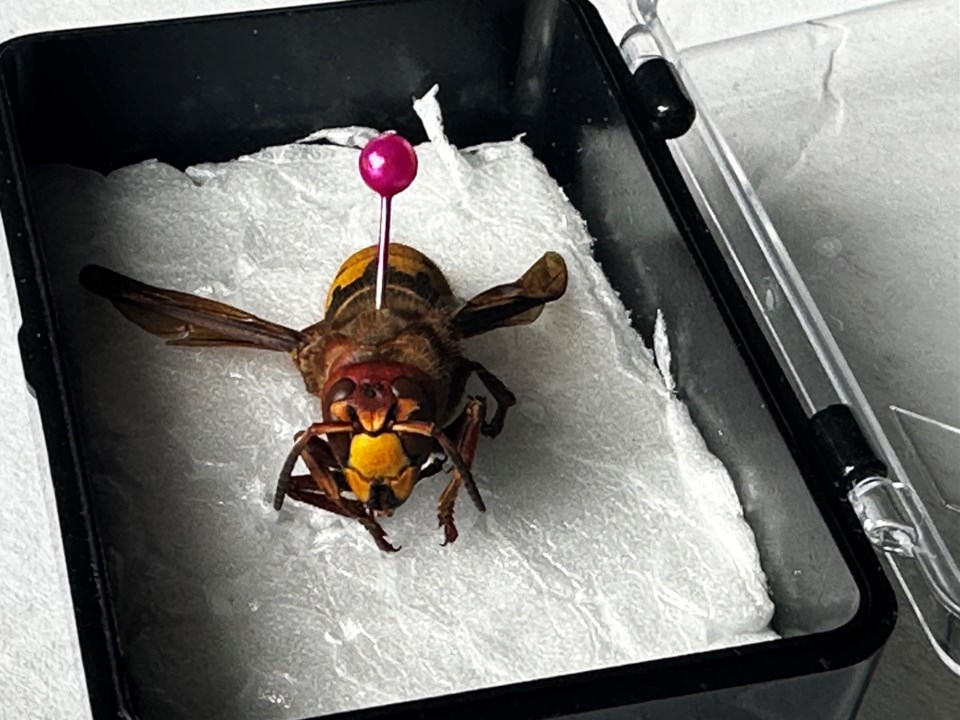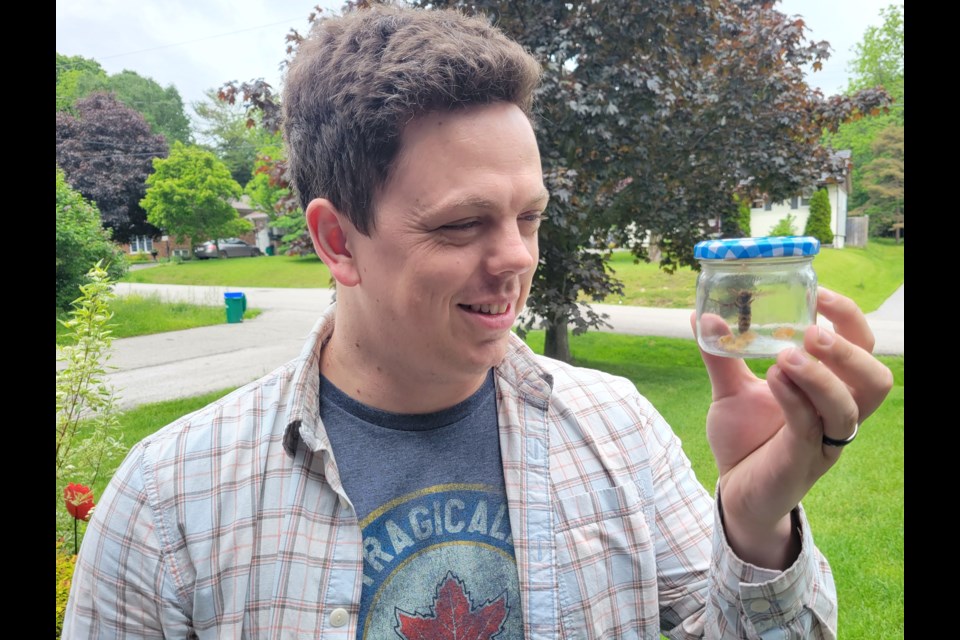SEVERN TOWNSHIP - Have you seen any giant hornets buzzing around Simcoe County?
For one Severn Township resident, large hornets that dwarf native wasps have become an occasional sight on his property, and he initially suspected them to be the ‘murder hornets’ that made headlines after invading parts of the Canadian and American west coast several years ago.
After passing along a specimen, OrilliaMatters spoke with local environmental expert, Bob Bowles, who confirmed the species was not the northern giant hornet from Asia, but the smaller — though still imposing — European hornet.
“They are very similar, and they often get misidentified as the northern giant or Asian hornet, which is in the same family, but we've only got a few records of those — mainly in the western states and in the Fraser Valley in Canada,” Bowles told OrilliaMatters. “They're the largest hornet in the world, and they can go up to five centimetres or two inches long.”

Bowles said distinguishing features between the two include dark brown sections along the European hornet’s head — whereas the northern giant hornet has a fully yellow head — and “keyhole” markings along the European hornet’s black and yellow thorax, which are absent on the northern giants.
“Don't go too much by size because it's hard to discern a three to five centimetre difference,” he said. "Look at the features the … giant has a complete yellow head, whereas in this European hornet you’ve got a yellow face, and then the top of the head is kind of a rich brown.
“The European hornet has the bands with keyhole marking spots, whereas the northern giant hornets only have bands," said the local naturalist.
The European hornet’s Asian counterpart has earned its ‘murder hornet’ moniker for both the rare human death it causes, as well as its proficiency at slaughtering hives of Western honeybees and other insects.
“It has a powerful sting. It can sting repeatedly, and people die from the sting,” Bowles said. “They will actually eat (bees’) heads off with their big mandibles, and then carry their bodies back to the nest to feed their young — so that's what the trouble is.”
While the European hornet doesn’t have the same propensity for violence against honeybees, Bowles still has concerns they could provide competition to countless native pollinators in the area.
A non-native species, the European hornet was introduced to North America in the 19th century, becoming well-established in the time since, including in the woodlands of southern Ontario — though Bowles has only seen the species in Simcoe County over the past five or six years.
Bowles said there are countless other pollinators in Ontario, with ‘colonial nesters’ like bees and wasps making up only a small portion of the total.
“It’s non-native, it’s large, and it will compete,” Bowles said. “We brought the Asian ladybug here to control the aphids on soybeans and now they are crowding out the native ladybugs, so these will crowd out the native yellowjackets, as well.”
With regard to the ‘murder hornets’, however, Bowles said they are unlikely to traverse western Canada into Ontario on their own — though they could find a way yet.
“They're not good across the prairies, but we're getting so much shipment of things now, (and) we’re getting invasive species,” he said. "(There’s a) new one every year, so certainly watch for these murder hornets.”
